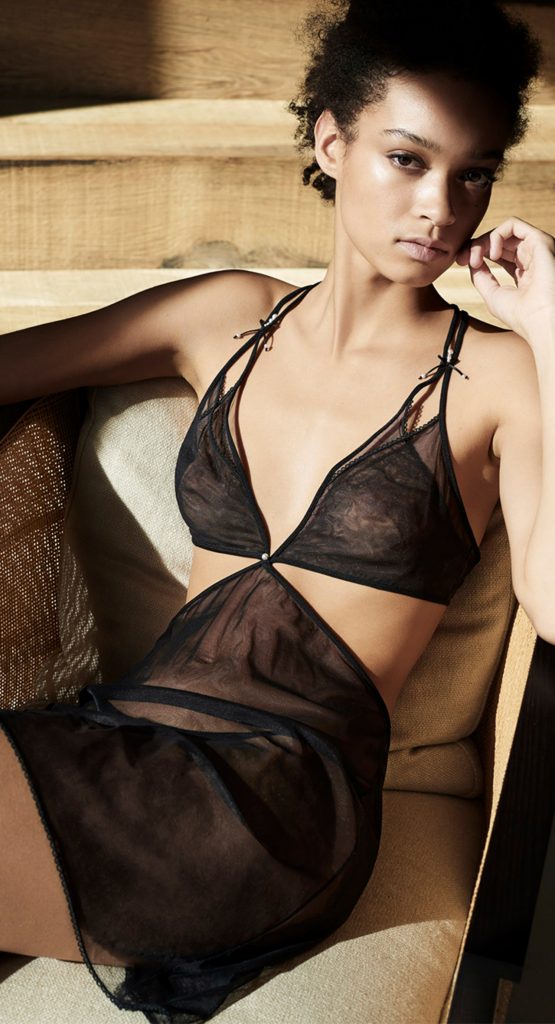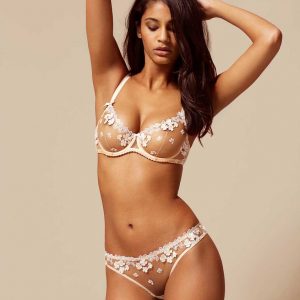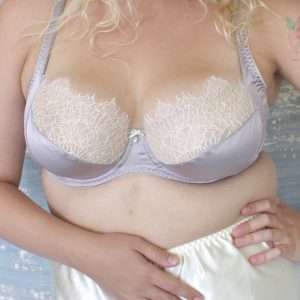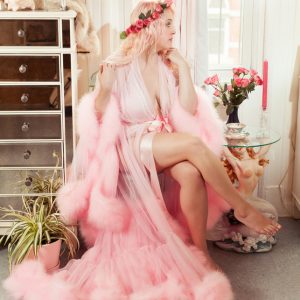How to Tell If Expensive Lingerie is Worth the Money
Evaluating the worth of expensive lingerie can be tricky. There are specific physical attributes you can examine - the quality of fabric, the fineness of lace, the tidiness of a seam - but so much of lingerie’s value isn’t quantifiable.
For instance, there’s the value of a brand name. Think of Agent Provocateur or La Perla, two lingerie brands selling two different ideas of luxury alongside their lingerie. There’s the value of rarity. If only one brand makes bras that fit you, that bra may be worth any price. And of course, there’s the value of style. If a designer is doing something that no one else is doing, or if you adore the aesthetics of a certain brand, those pieces may be worth much more to you.
Or maybe none of this matters to you. That’s fine. What’s “worth it” to you may not be “worth it” to someone else, and vice versa.
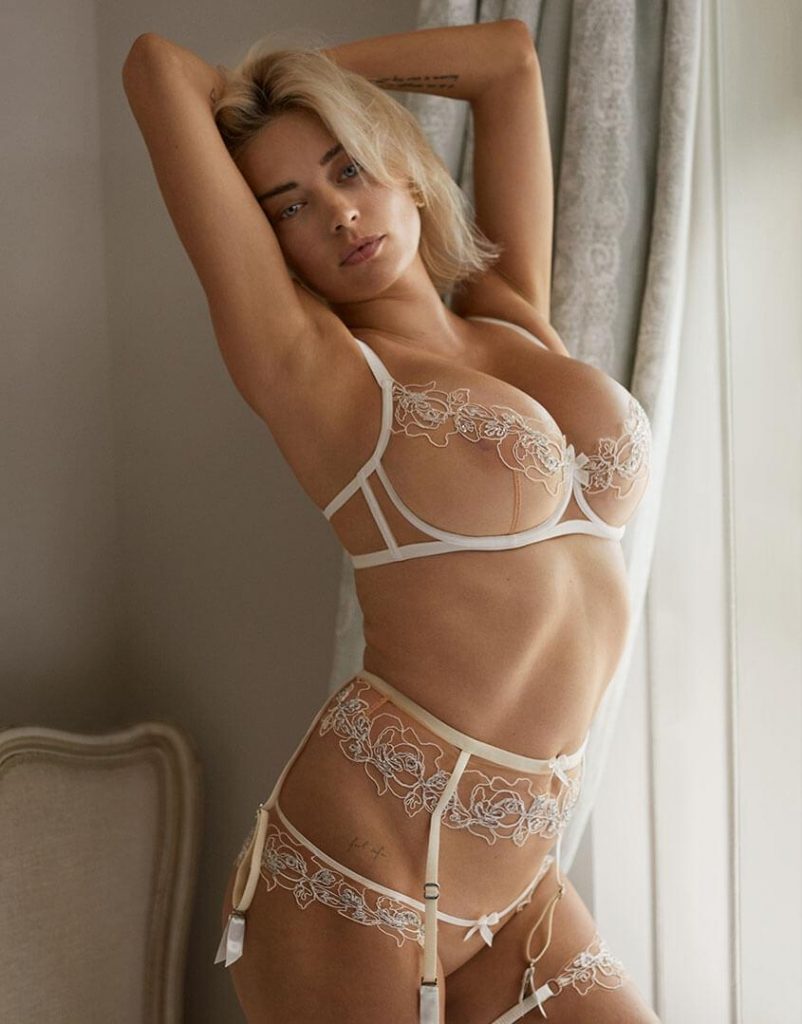
Agent Provocateur, whose bras start at about $130 and go up to four digit prices.
Not only is it difficult to evaluate the worth of expensive lingerie, but even the word “expensive” means different things to different people. One person might think an $80 bra is expensive, while another might think a $80 bra is reasonable...or even cheap.
But one thing’s for certain. Lingerie is rarely worth purchasing as an investment. Expensive lingerie isn't inherently more valuable than less expensive lingerie. No matter the price, you likely won't be able to resell it for a profit. Any resale value is typically unknown until years later, when an item may (or may not) be considered an iconic piece of vintage lingerie. It’s important to decide what’s valuable to you, and make purchases based on those decisions.
In this guide, I'll teach you how to judge the value of a piece of lingerie. Pick and choose what’s important to you and keep these guidelines in mind while shopping, so you can make the right purchasing decisions for you and your lingerie wardrobe.
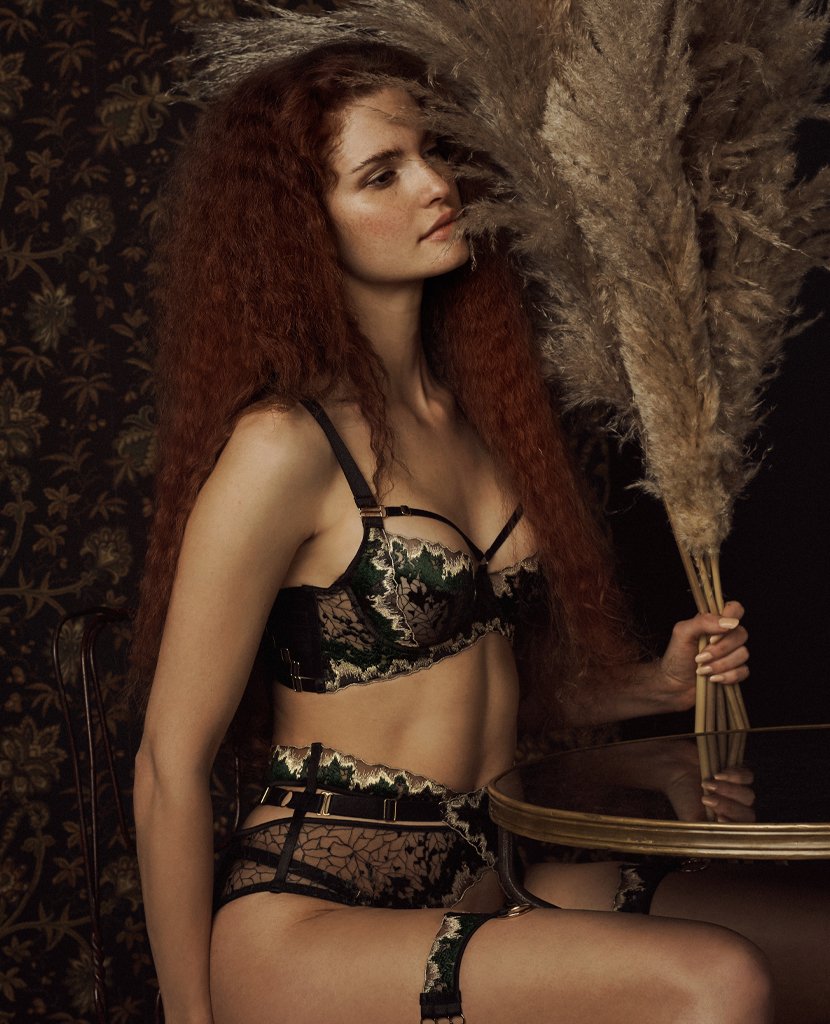
Bordelle offers iconic strappy styles, as well as custom-tailored pieces for an additional fee.
What is the Lace Like?
Evaluating quality is one of the best ways to verify the worth of a piece of lingerie. However, much of this comes with slow practice and exposure to different types of fabrics and construction methods.
Unless you’re previously trained in textiles or construction (or you’ve spent your life shopping at fine department stores), it’s not the easiest thing to judge. This section focuses on the elements of expensive lingerie that would be relatively easy to judge by the average consumer, and would be most important to a typical lingerie wearer.
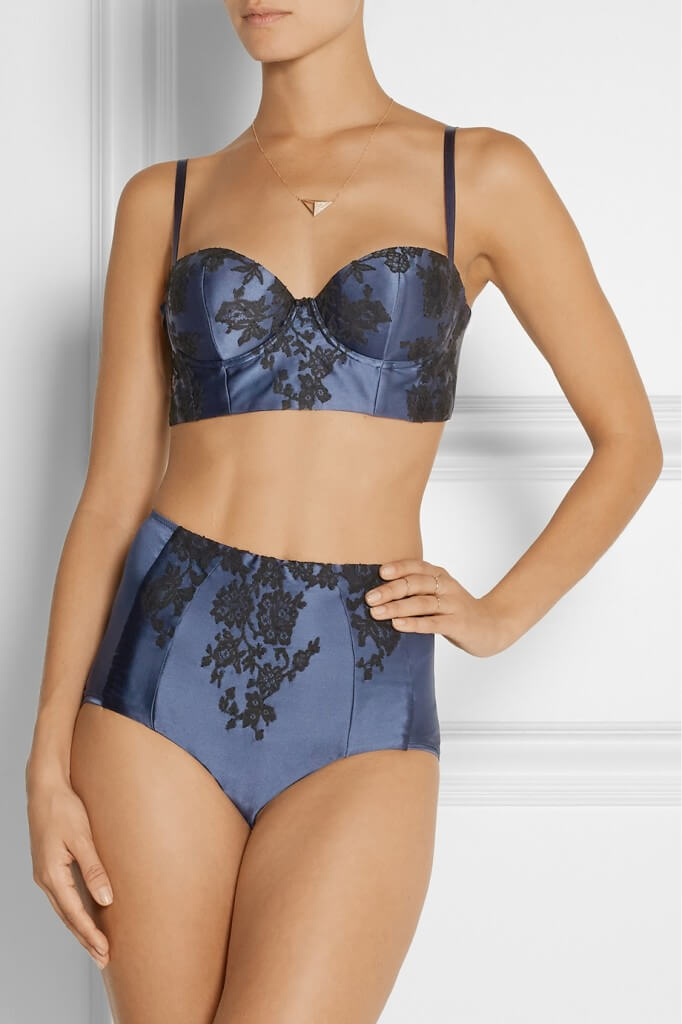
Carine Gilson's iconic lace applique uses some of the most beautiful materials in the world.
First, examine the lace or embroidery. Evaluating trims is a great way to make a split-second analysis on a piece of expensive lingerie.
Is the lingerie embellished with lace, which is made from scratch on a designated machine? Or is it embellished with embroidered trim, with threads stitched onto an existing ground? In general, lace is more expensive than embroidery, but embroidery can be just as gorgeous as lace.
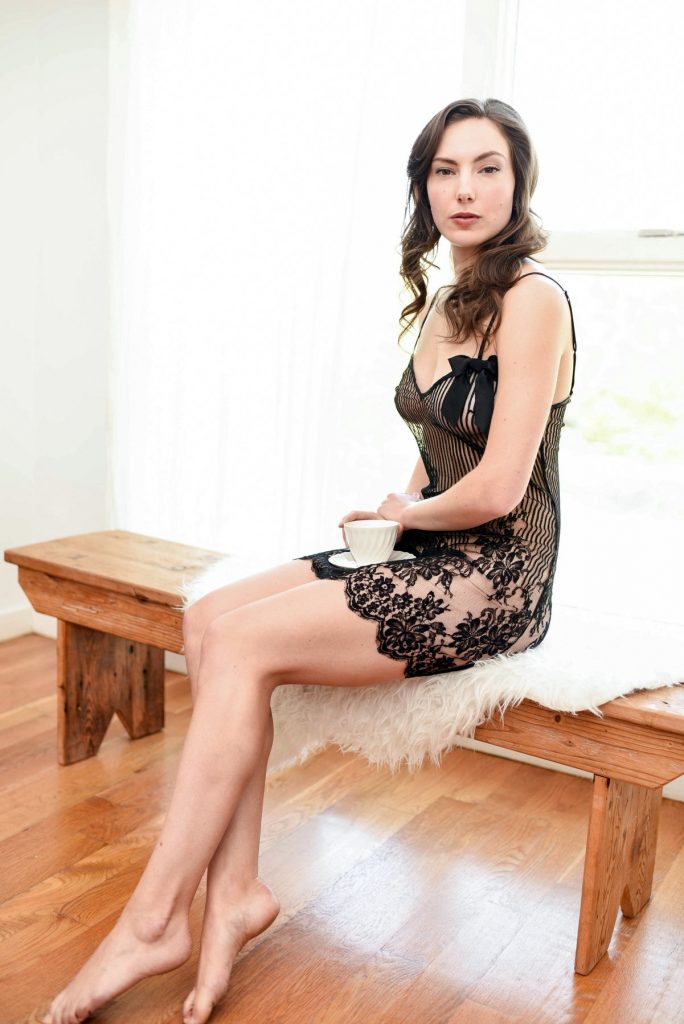
Angela Friedman often designs around a lace or embroidered fabric, such as this slip made entirely from an extra-wide swath of lace.
Remember: not all lace is created equal. It takes practice to see the difference between a fine lace and a less expensive one. Even the typical luxury lingerie brand can't use the most expensive lace. However, you can check the general quality of a lace by asking yourself the following questions. Is the lace soft and not plastic-y? And do the motifs in the lace look carefully-designed?
Additionally, check the engineering of the lace on the garment. Is the lace sewn so the pattern is symmetrical across the garment? Does the garment carefully utilize specific parts of the lace? These construction methods create more waste and are more expensive. So generally, they act as a sign of a thoughtfully-designed, valuable garment.
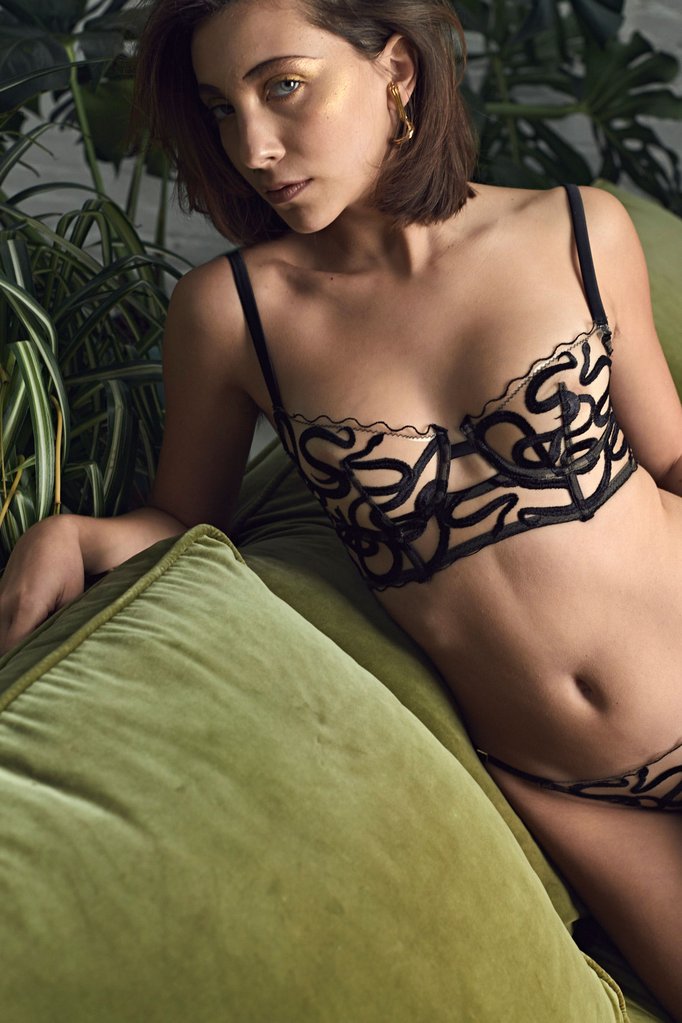
Studio Pia's lingerie showcases the most stunning examples of custom embroideries.
If the trim is embroidered, is the embroidery unique? Most "novelty" embroideries are developed by the brand, and are unable to be purchased elsewhere. Are the stitches secure and tightly stitched against each other on the ground fabric, or are they already coming apart? Loose threads on the back of the mesh are a sign of poor quality.
How is the Fabric?
Next, examine the fabric. What’s the fiber content? Natural fibers like cotton and silk are a safe bet for a good cost-to-value ratio, but synthetic fabric doesn’t mean cheap. Some synthetic and manmade fibers, especially those used in technical fabrics, can be just as expensive and feel even nicer against the skin.
Beyond fiber content, how does the fabric feel? Is it stiff or scratchy, or smooth and soft? Does it cling to your skin in a sticky way, or does it breathe? An easy way to check whether or not you should purchase something is to ask yourself: "Would I want this fabric against my skin for a long period of time?"
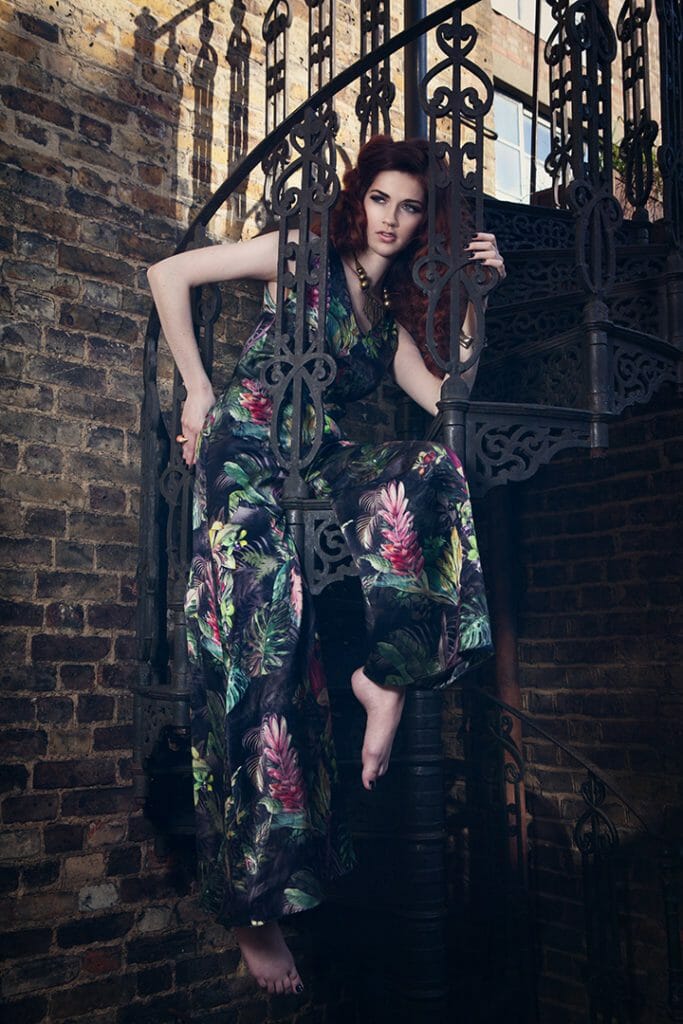
Department of Curiosities' tropical print, designed by tattoo artist Esther Garcia, was inspired by the flora of Costa Rica, where designer Gerry Quinton was born.
If the fabric is printed, does the design look clear? Do the different colors line up in the right places? Is this a pattern the brand developed especially for their garments? A high quality print should be crisp and clear. Anything less and the quality is poor, for any price point.
Are the Details High Quality?
Examine the other embellishments. Are the metal hooks and rings dyed to match the rest of the garment, or are they a purposefully-chosen metal color? It says a lot when a brand is thoughtful in choosing these.
Are the elastics soft and sturdy? Do they feel like they would be supportive enough for the garment in question? For instance, a petite soft elastic is nice on the cup of the bra for stability and style, but a sturdier one is needed for the straps.
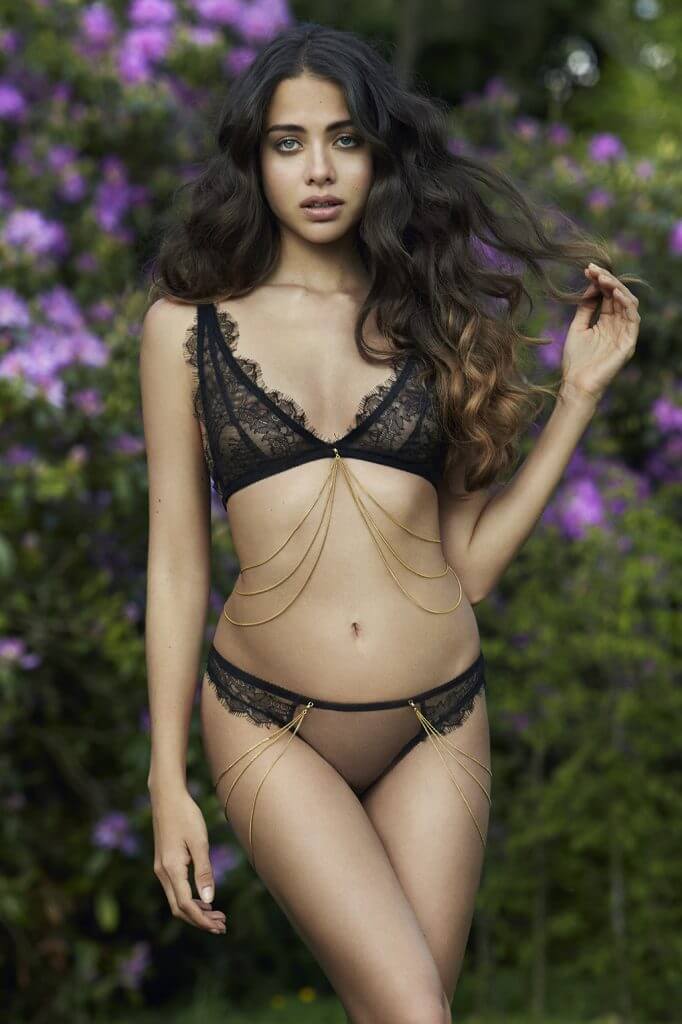
Edge O Beyond's chain details always clip off for ease of washing and wearing.
If there are rhinestones, are they Swarovski Crystal, a nice glass, or just plastic? Plastic rhinestones are much less expensive than glass, but feel cheap in comparison.
If the garment has a chain or other details that may be difficult to wash, do they clip on and off for ease? A bra with a removable embellishments shows that the maker understands the garment is meant to be worn and washed, and doesn't mind spending extra money to make that easier.
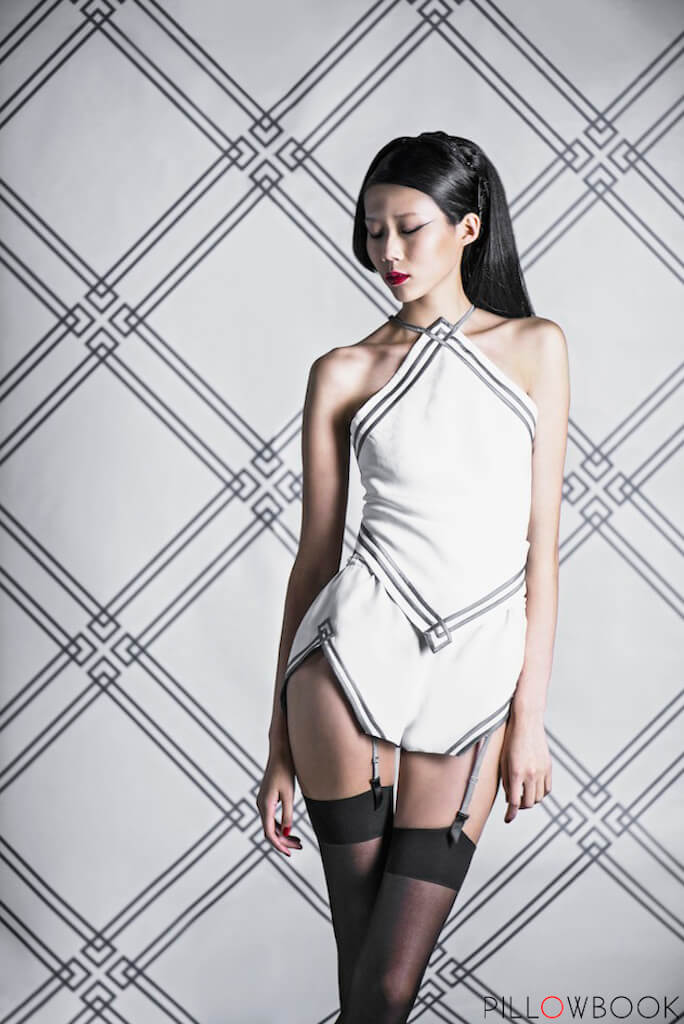
Pillowbook's stitching is bafflingly perfect, and a sign of true luxury lingerie.
How is the Construction?
Examine the construction. Is the stitching even and small? Are all the threads carefully clipped? Are all the seams neat and clean? Is everything attached sturdily? If your garment has lace applique, what is the stitching like? How carefully is the lace trimmed?
So much of these quality details vary wildly based on cost. A silk slip with a lace applique hem could cost anywhere from $150 to $5000, depending on the quality of the construction and the lace. But whatever price point you’re looking at, look for careful stitches, clean seams, and sturdy stress points.
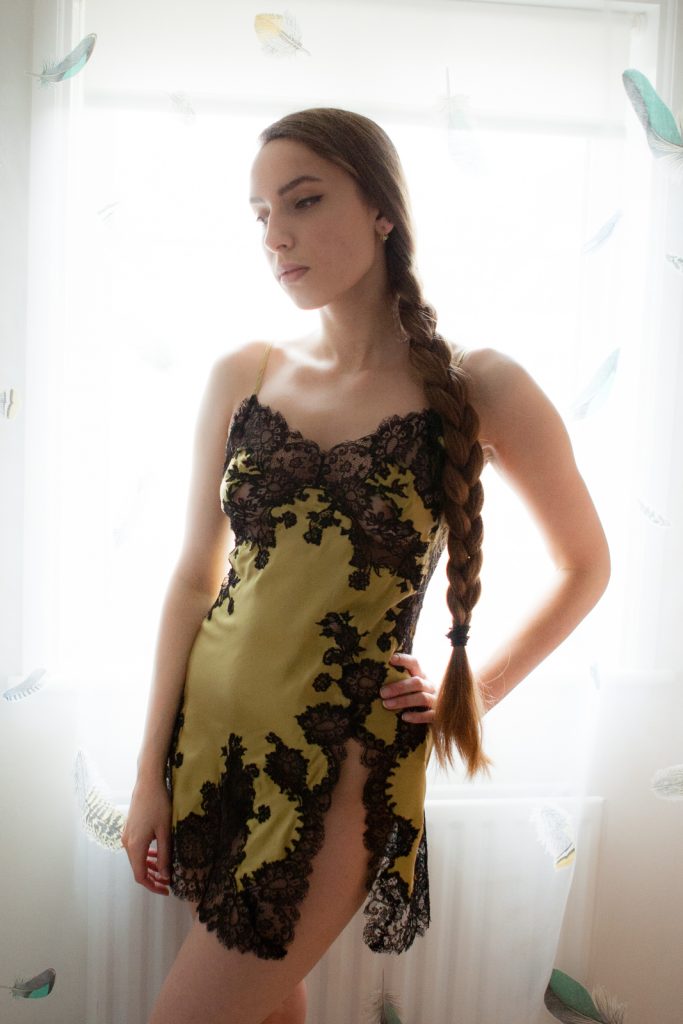
Marjolaine, as worn by Karolina Laskowska.
If you’re interested in learning more about the construction of high-quality lingerie, Karolina’s posts and reviews are a veritable fountain of knowledge. Her two-piece guide to lingerie construction, featuring the most common types of stitches and how to judge the quality of those stitches, is a great place to start learning about quality lingerie fabrics and constructions.
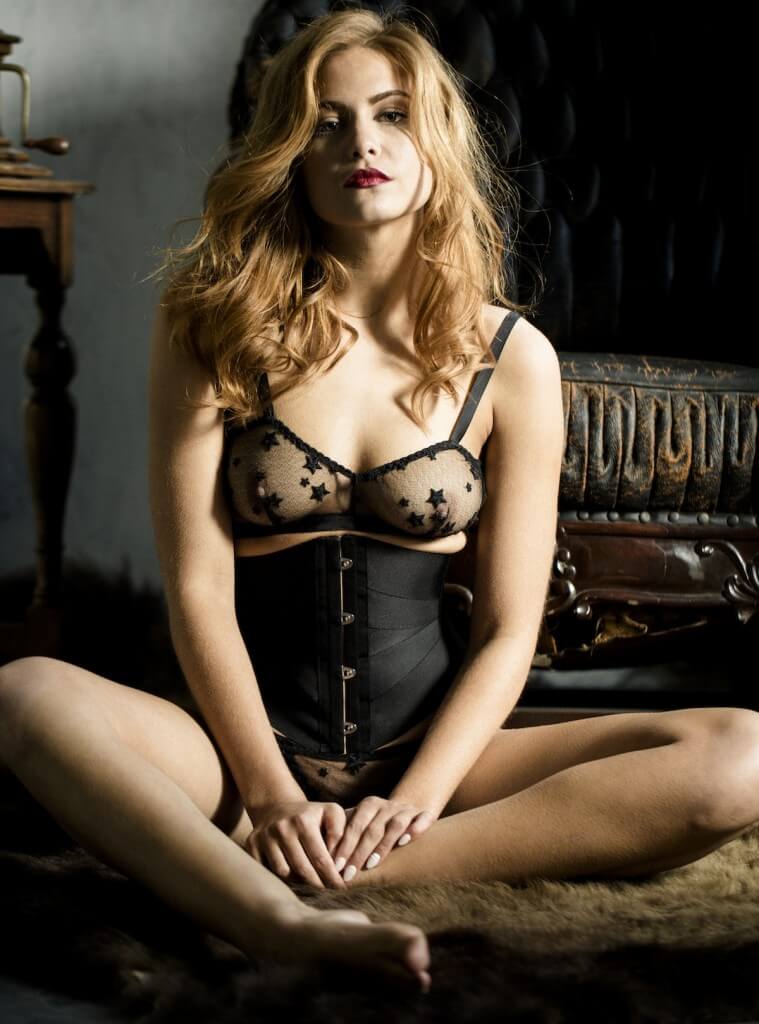
Evgenia's full collection is made exclusively by the designer in her northern California studio.
Who Made It?
Because all lingerie is handmade by human beings, the manufacturing cost is the most expensive part of lingerie. This makes the manufacturer incredibly important when you’re thinking about value.
Yes, all lingerie is handmade, but the person making them has a huge impact on the value of a garment. For instance, are the pieces made to order, or does the designer carry stock? Because of economies of scale, a one-off lingerie set costs much more to make than a set produced by the thousands.
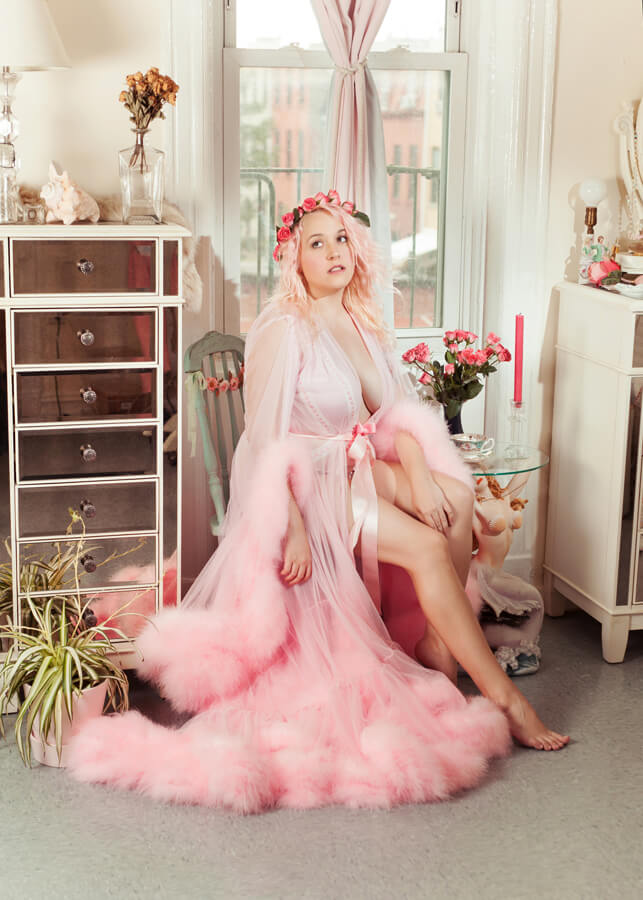
This Catherine D'Lish robe spawned a million knock-offs, but the original offers the best style-to-cost-to-quality ratio.
When you're buying a specific piece of luxury lingerie, check to see if the style originated with the designer. Catherine D'Lish certainly didn't invent the feather-trimmed mesh gown, but she did popularize it. This led to budget and luxury brands alike copying the style. All other factors identical, it's always better to purchase the actually iconic piece. Do a little Googling (or even ask TLA's Lingerie Addicts Facebook group!) to make sure you're purchasing the "original."
For indie brands, is every item by the brand made by the maker? Many well-known indie brands are “one-person shows,” where the designer acts as the marketing manager, seamstress, customer service representative, and shipping coordinator. A $100 bra from a one-person indie brand certainly has lower markups than a $100 bra from a mass market label. Plus, spending $100 on an indie brand might help keep them in business an extra few months. If this is important to you, it’s something to consider.
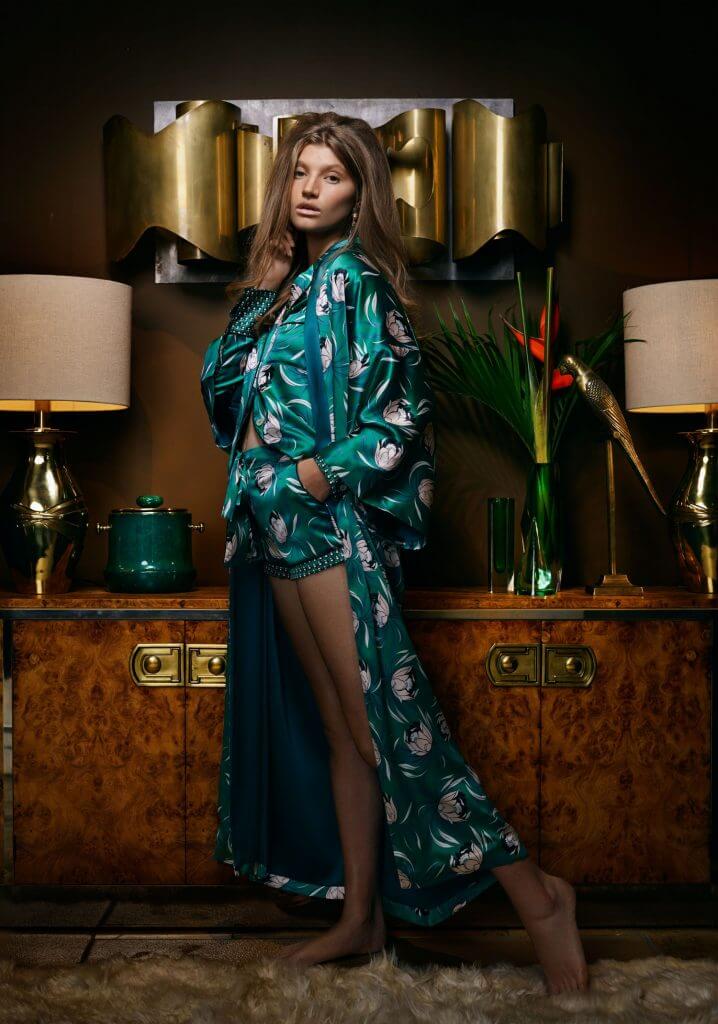
Olivia Von Halle's luxury silk pajamas are impeccably tailored. The brand has a strict Corporate Social Responsibility process, ensuring ethical processes from the factory floor to the sales floor.
For factory-made lingerie, does the brand have an ethics statement on their website? Are the garment workers paid fairly for their jobs? Do they have adequate time off? Are they given sustainable working hours?
Not only do ethical manufacturing standards make lingerie more expensive to create, but if garment worker rights are important to you, the value of an ethics statement - or lack thereof - could be immense. You can read more about ethically-made lingerie on TLA’s “ethical lingerie” tag.
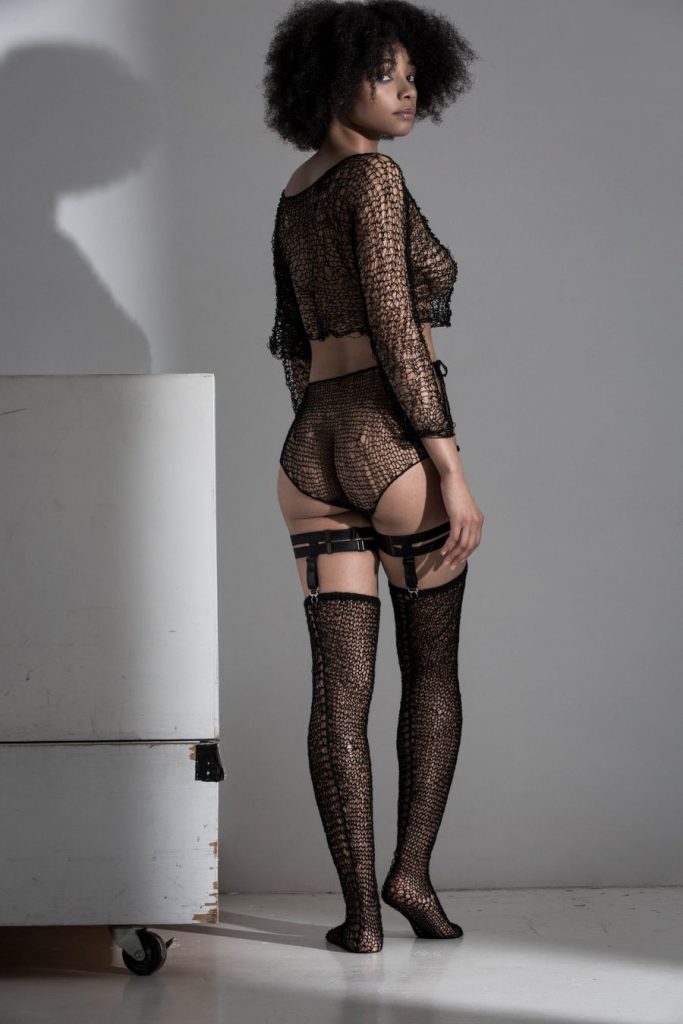
Maude Nibelungen's hand-knit pieces are made to order by the designer herself.
Will You Love It?
You could spend $1,000 dollars on the most beautiful, ethically-made lingerie set you’ve ever seen, with impeccable stitching of the finest French lace to the most luxurious silk velvet. But is it worth it if you don’t personally love it? If you don’t wear it? If it sits in your closet for years? If it doesn’t fit you, or if you don't feel uncomfortable in it?
If the set has sentimental value to you, or if you’re aiming to be a luxury lingerie collector, or if your heart will skip a step every time you open your closet doors, this beautiful ensemble may be worth it to you regardless.
But do consider whether or not you want to invest in a expensive lingerie set that won’t be worn and embraced. Maybe that price would be better off split in half, for two less expensive sets that will make you feel beautiful every time you wear them.
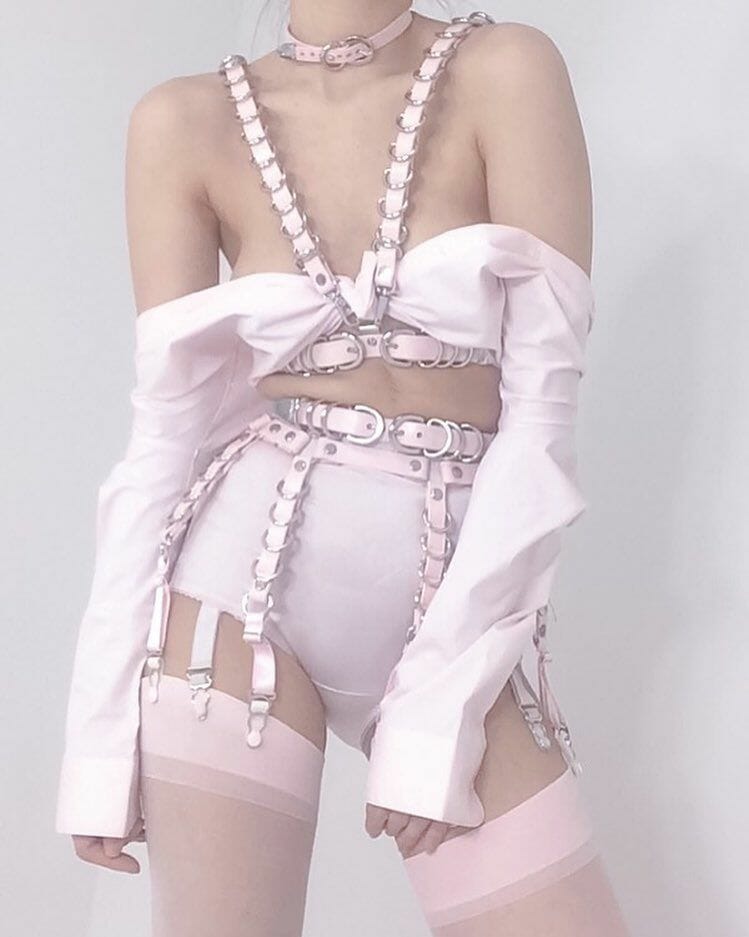
My Creepyyeha pieces are some of my most favorite lingerie pieces, regardless of price.
The aspect of value is so personal. For me, style is an important part of this equation. I love so many styles of lingerie, but I have a very specific personal style that brings me a lot of joy. If my lingerie doesn’t fit into that, it won’t make me happy and I won’t wear it. Consider the style of the lingerie you want to wear, and whether or not any potential purchases fall in those guidelines.
Fit is a big aspect of this, too. If that dainty, diaphanous mesh bra makes you feel terrible about yourself when you put it on, first examine why you feel terrible in it! But if you really don’t feel beautiful when you slip it on, you might want to pass.
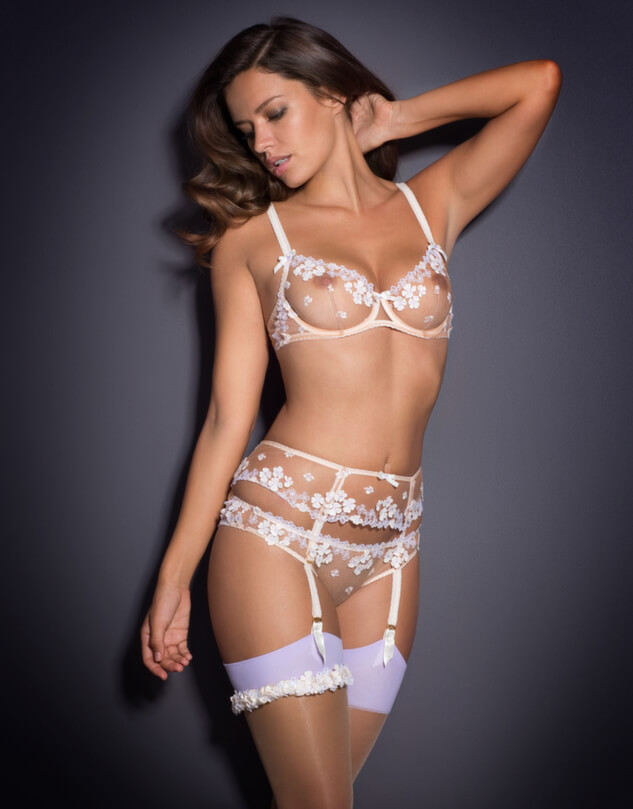
The Agent Provocateur Bethanie set is another favorite of mine. It doesn't offer the best fit, but I still feel beautiful every time I put it on.
So..is It Worth it?
Is that $300 bra, $1000 silk robe, or $5000 gown worth spending your money on? Even as a lingerie industry professional, I can’t answer that for you. Value is too subjective for me to tell you whether or not a piece of expensive lingerie is worth it.
However, I can make an educated judgment on the quality, the style, the manufacturing methods, and the fit. With a little practice, you can, too. Hopefully, this guide will help you consider all the different aspects of quality lingerie, so you can decide what’s important to you, what to study up on, and how to shop for expensive lingerie that you'll feel good about buying.





